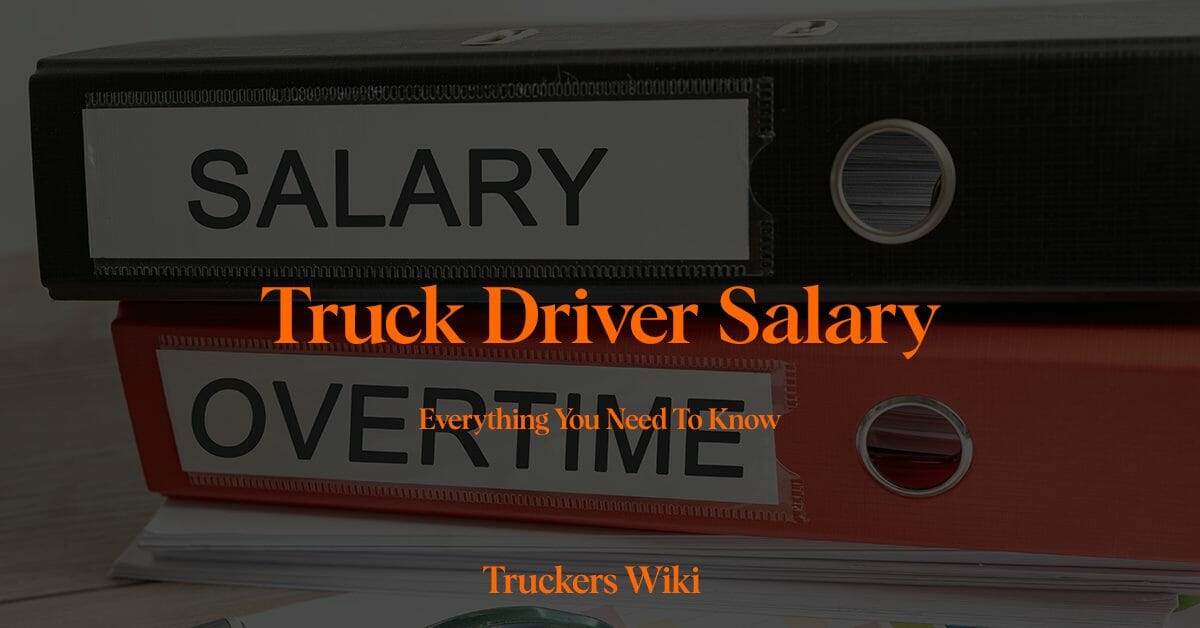
Table of Contents
Average Truck Driver Salary in US
On average, truck drivers in the U.S. earn an annual salary ranging from $45,000 to $85,000, depending on the type of driving, the company, experience, and the region of operation. Entry-level drivers typically start on the lower end of the spectrum, while seasoned drivers with specialized skills can earn higher compensation.
Truck Driver Salary Structure
Cents Per Mile (CPM)
The most common pay structure for long-haul truck drivers. Drivers are paid a certain rate for every mile they drive.
Advantages
The more you drive, the more you earn. This can be particularly beneficial for those willing to put in long hours on the road.
Disadvantages
Delays like traffic, breakdowns, or prolonged wait times at loading docks don’t increase earnings. Empty miles (driving without a loaded trailer) might not be compensated, or compensated at a lower rate.
Learn more about Cents Per Mile here.
Per Diem
A set daily allowance given to drivers to cover meals and other expenses while on the road. It’s intended to be a tax benefit, allowing drivers to receive a portion of their income without taxes, as it’s reimbursement for on-the-road expenses.
Advantages
Immediate reimbursement for daily expenses, potential tax savings.
Disadvantages
Can result in lower gross income, which might affect other financial aspects like loans or retirement benefits.
Learn more about Per Diem here.
Hourly Rate
Drivers are paid based on the number of hours they work. This is more common for local or short-haul drivers.
Advantages
Compensation isn’t tied solely to miles driven. Delays, waiting times, or other tasks like loading/unloading are all compensated.
Disadvantages
There’s usually a ceiling to how many hours can be worked in a day or week due to regulations and safety concerns, potentially capping earnings.
Salary
A fixed annual amount paid to the driver, often divided into weekly, bi-weekly, or monthly payments.
Advantages
Predictable and consistent pay regardless of miles driven or hours worked.
Disadvantages
Might not capture the full value of extra efforts or longer hours on certain weeks.
Load Pay
Drivers are paid a set fee for each load they transport, regardless of distance or time taken.
Advantages
Can be lucrative for short but heavy or demanding loads.
Disadvantages
Long distances or difficult hauls might not always be compensated proportionally.
Stop Pay
Drivers receive compensation for each stop they make (excluding the first and last stop). This is common in less-than-truckload (LTL) freight.
Advantages
Rewards the additional work involved in making multiple stops during a route.
Disadvantages
Base mile rate might be lower, so the overall compensation depends on the number of stops.
Bonus Structures
Additional compensation for meeting certain criteria, such as safety bonuses, sign-on bonuses, or performance-based bonuses. Encourages and rewards safe and efficient driving. Can significantly boost overall earnings. Usually contingent on specific requirements or milestones.
Factors Influencing Salary
Experience
Like many professions, experience matters. Seasoned drivers, especially those with a track record of safety and reliability, can command better rates than newcomers.
Type of Haul
Different types of hauls, such as dry vans, flatbeds, tankers, or refrigerated trucks, might offer varying pay scales. Specialized hauls like oversize loads or hazardous materials often command higher rates due to the added responsibility and required certifications.
Company vs. Owner-Operator
Company drivers typically receive a consistent salary, benefits, and might have some expenses covered. In contrast, owner-operators have the potential to earn more but also shoulder the costs of truck maintenance, insurance, and other overheads.
Location
Salaries can vary by region due to cost of living, demand for drivers, and regional industry needs. For instance, drivers in areas with bustling ports might have different earning potentials than those in landlocked states.
Mileage vs. Hourly Pay
Some companies pay drivers by the mile, while others might offer hourly rates, especially for routes with heavy traffic where driving slower might be unavoidable.
Additional Earning Opportunities
Bonuses
Many trucking companies offer sign-on bonuses, safety bonuses, or performance bonuses to incentivize and reward their drivers.
Overtime
Depending on the employment structure and state laws, drivers might be eligible for overtime pay for hours worked beyond the standard workweek.
Benefits Beyond Base Salary
When considering compensation, it’s essential to look beyond just the base salary. Many trucking companies offer comprehensive benefits packages, including health insurance, retirement plans, paid time off, and more. These perks can significantly add to a driver’s overall compensation package.
Tips for Maximizing Earnings
Continuous Learning: Acquiring additional certifications, like HazMat endorsements, can open up more lucrative driving opportunities.
Networking: Building a good reputation and networking within the industry can lead to higher-paying job offers or referrals.
Negotiation: Especially for owner-operators or experienced drivers, there’s always room to negotiate better contracts or rates. Knowing one’s worth in the market is crucial.
Learn about W2 for Truck Drivers here.
Learn about 1099 for Truck Drivers here.

